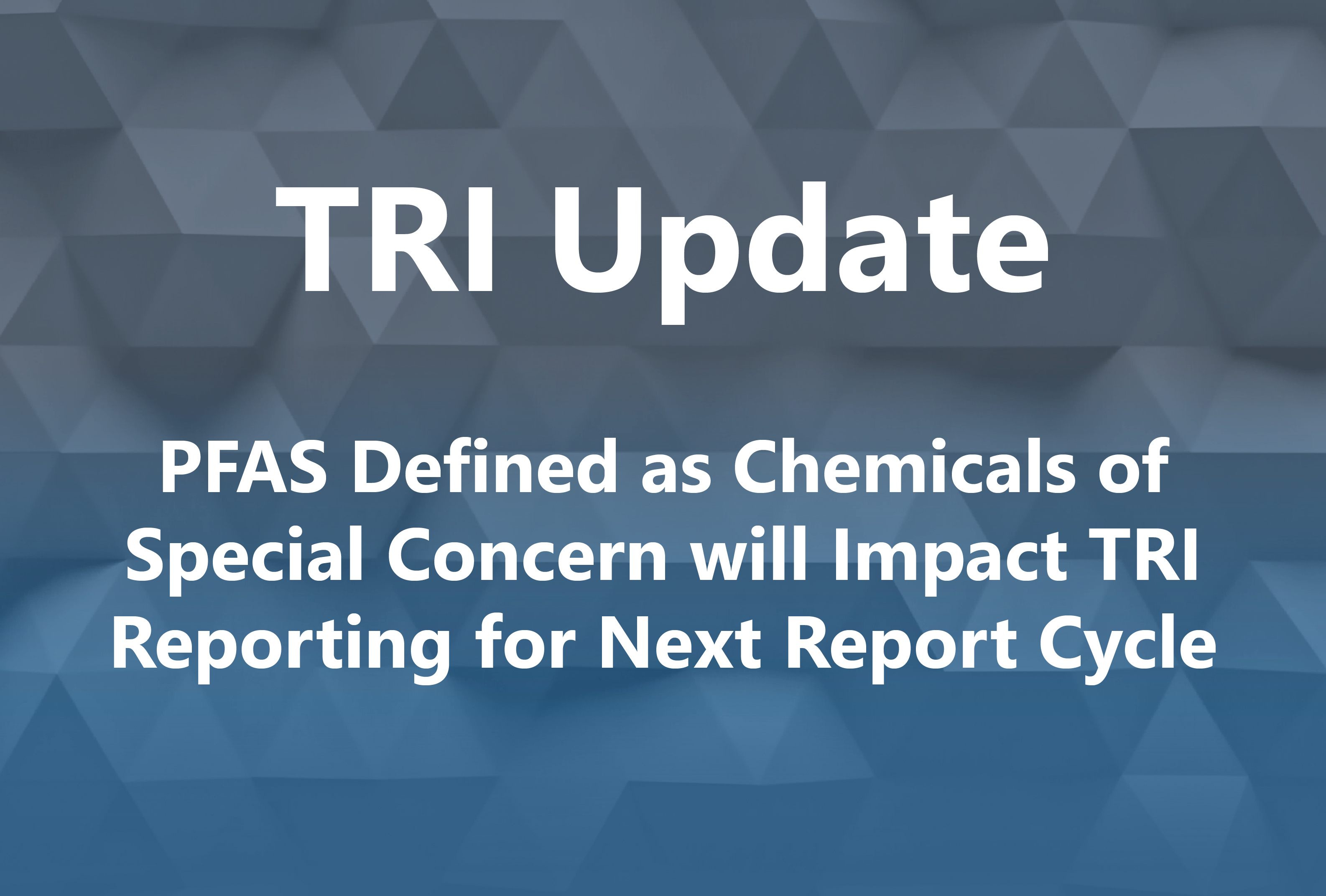On January 3, 2025, the U.S. Environmental Protection Agency (EPA) announced the automatic addition of nine per- and polyfluoroalkyl substances (PFAS) to the list of 196 PFAS already covered by the Toxics Release Inventory (TRI). Under the framework of the Fiscal Year 2020 National Defense Authorization Act (NDAA), the automatic addition of nine PFAS to […]
Continue readingTRI Update – PFAS will Impact TRI Reporting for Next Report Cycle
As most of us know, the TRI reporting cycle for RY23 closed on July 1, 2024. However, a recent regulatory change will impact the TRI reporting of PFAS for next year and TRI reporters should understand how this may impact their reporting obligations. In November, the U.S. Environmental Protection Agency (EPA) designated PFAS subject […]
Continue readingEPA Issues Notice for Mandatory PFAS-Related Chromium Questionnaire
The Environmental Protection Agency (EPA) is investigating a potential correlation between chromium and PFAS contamination. Notices have been issued to wastewater facilities engaged in specific chromium-related metal finishing and electroplating activities, mandating their participation in a Chromium Finishing Questionnaire. The completion deadline for this questionnaire is set for March 1. USEPA Chromium Questionnaire Information According […]
Continue readingTSCA Update – EPA Finalizes PFAS Reporting Rule – October 2023
On October 11, 2023, the Environmental Protection Agency (EPA) issued a rule requiring that manufacturers (including importers) of per- and polyfluoroalkyl substances (PFAS) report information related to chemical identity, use and volume since 2011. The initial reporting period begins in November 2024. This broad-reaching reporting rule under the Toxic Substances Control Act (TSCA), will impact […]
Continue readingMastering Complexity: How to Complete an MGRA Project in Record Time with Skill and Expertise
Focus is the name of the game for this complex Machine Guarding Risk Assessment (MGRA) project our team performed recently at a large paper mill company. With more than 1,000 individual pieces of equipment – pumps, motors, agitators, conveyors, shop equipment and paper, our team collaborated and focused to provide a quality deliverable to our […]
Continue reading



